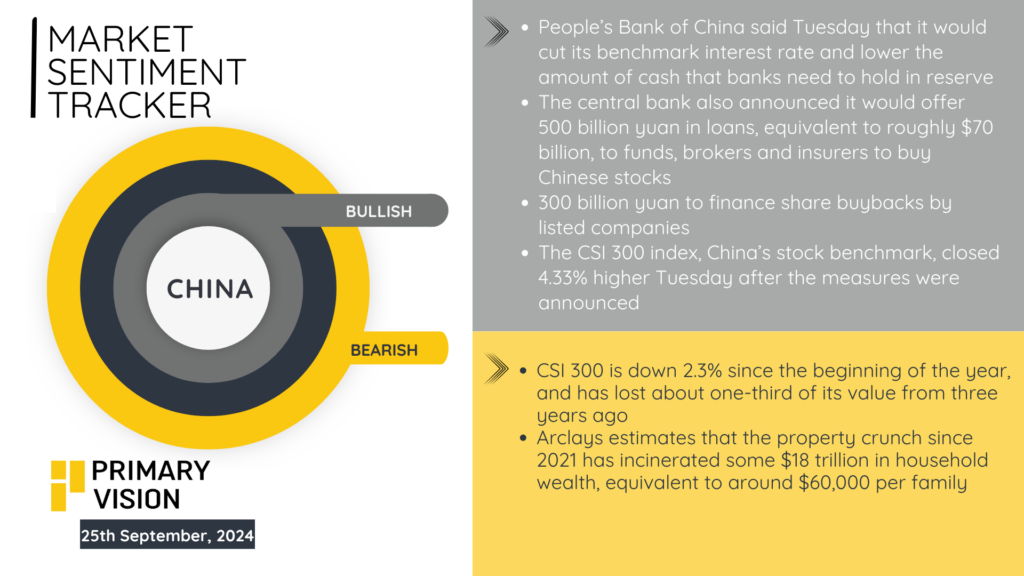China’s economic policymakers have implemented fresh interventions to bolster confidence. The People’s Bank of China cut the benchmark interest rate and reduced the reserve requirement ratio, increasing liquidity. Additionally, the central bank announced a 500 billion yuan ($70 billion) injection through loans for funds, brokers, and insurers to purchase stocks. Another 300 billion yuan was earmarked for share buybacks by listed companies.
Following these measures, the CSI 300 index climbed 4.33%, though the index remains down 2.3% year-to-date and has lost roughly a third of its value compared to three years ago. China’s ongoing property crisis continues to weigh heavily on household wealth, with Arclays estimating that since 2021, the property sector has wiped out $18 trillion in wealth—about $60,000 per family. This highlights the deep structural challenges China faces, as financial interventions seek to counter persistent vulnerabilities in real estate and financial markets.

The Eurozone economy experienced a sharp slowdown as the third quarter neared its end. S&P Global’s Composite Purchasing Managers’ Index fell to 48.9, signaling contraction in private-sector activity in September. Services activity, which had previously been buoyed by the Olympic Games in Paris, slowed notably, with the services index dropping to 50.5 from 52.9, its weakest rate of growth in seven months. On a positive note, the Eurozone job market remains robust, with the unemployment rate at a record low. Business pricing pressures have also eased, with price rises occurring at their slowest pace since the onset of the Russia-Ukraine conflict in early 2022, signaling some relief in the cost-of-living crisis. However, these trends collectively highlight the mounting pressures on the Eurozone’s economic outlook as it faces continued challenges in demand and services growth heading into the final quarter of 2024.

In the US, the Chicago Fed National Activity Index (CFNAI) showed improvement in August, rising to 0.12 from -0.42 in July. However, the three-month moving average decreased, signaling continued economic headwinds despite short-term recovery. S&P Global’s US composite PMI fell slightly to 54.4 in September, indicating slowing momentum in both manufacturing and services sectors. Meanwhile, Japan’s central bank is taking a cautious stance, with Governor Ueda signaling a wait-and-see approach on interest rates until economic uncertainties become clearer. Japan’s inflation is gradually moving towards the Bank of Japan’s 2% target, but further action remains uncertain. In Australia, the Reserve Bank held its official cash rate steady at 4.35%. In Germany, recession risks remain high as the Ifo Institute’s business-climate index dropped to 85.4 in September from 86.6 a month earlier, pointing to a cooling business environment in Europe’s largest economy.














